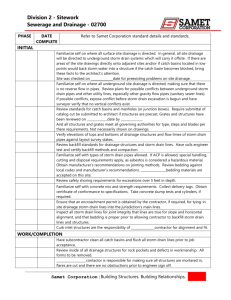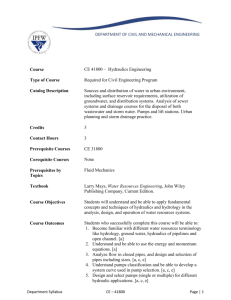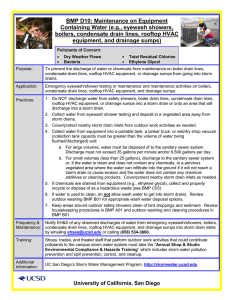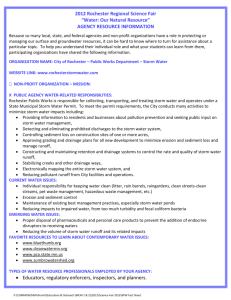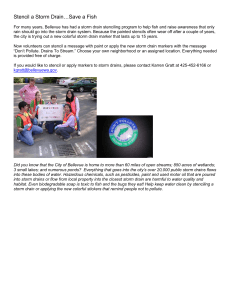23570 Describe, operate, and maintain storm water
advertisement
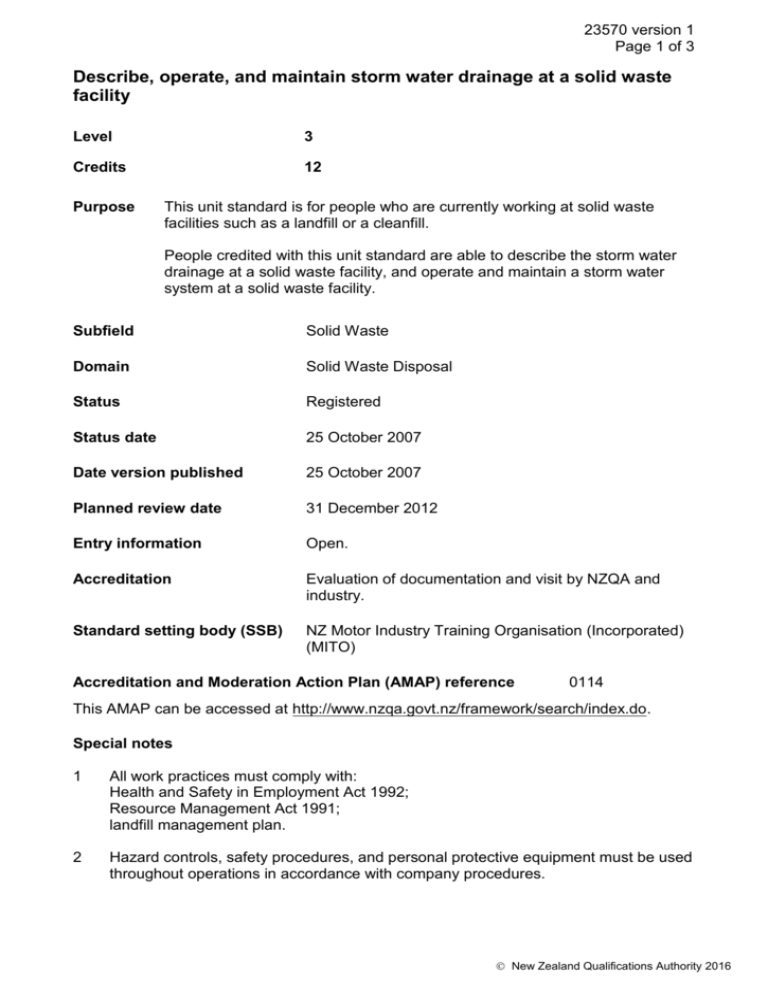
23570 version 1 Page 1 of 3 Describe, operate, and maintain storm water drainage at a solid waste facility Level 3 Credits 12 Purpose This unit standard is for people who are currently working at solid waste facilities such as a landfill or a cleanfill. People credited with this unit standard are able to describe the storm water drainage at a solid waste facility, and operate and maintain a storm water system at a solid waste facility. Subfield Solid Waste Domain Solid Waste Disposal Status Registered Status date 25 October 2007 Date version published 25 October 2007 Planned review date 31 December 2012 Entry information Open. Accreditation Evaluation of documentation and visit by NZQA and industry. Standard setting body (SSB) NZ Motor Industry Training Organisation (Incorporated) (MITO) Accreditation and Moderation Action Plan (AMAP) reference 0114 This AMAP can be accessed at http://www.nzqa.govt.nz/framework/search/index.do. Special notes 1 All work practices must comply with: Health and Safety in Employment Act 1992; Resource Management Act 1991; landfill management plan. 2 Hazard controls, safety procedures, and personal protective equipment must be used throughout operations in accordance with company procedures. New Zealand Qualifications Authority 2016 23570 version 1 Page 2 of 3 3 Definitions Company procedures means the documented methods for performing work activities and include health and safety, environmental, and quality management requirements. They may refer to manuals, codes of practice, or policy statements. Site management plan refers to documented guidelines and procedures for operations at the site. It includes consent conditions and legislative requirements. Elements and performance criteria Element 1 Describe storm water drainage at a solid waste facility. Performance criteria 1.1 Drainage is described in terms of the surface flows on the site. Range 1.2 Storm water system at the facility is described in terms of its components and function. Range 1.3 includes but is not limited to – degradation, ponding, continuity of flow, impediments to flow. components may include but are not limited to – culverts, sumps, conduit pipes, settling ponds, cut off drain, perimeter drain. Storm water discharge is described in terms of discharge requirements. Range may include but is not limited to – pH, electrical conductivity, turbidity, suspended solids, ammonia, chlorides, sampling requirements, contaminant levels. Element 2 Operate and maintain a storm water system at a solid waste facility. Performance criteria 2.1 The storm water system is operated to drain storm water in accordance with company procedures and manufacturer’s instructions. Range may include – control valve, siphon, submersible pump, lift pump. 2.2 Operation ensures that waste receiving areas and wash down facilities are isolated from natural water flows in accordance with the site management plan. 2.3 Operation ensures that water containing sediment is discharged to settling ponds in accordance with the site management plan. Range includes but is not limited to – road drainage, soil store cut off drainage. New Zealand Qualifications Authority 2016 23570 version 1 Page 3 of 3 2.4 Maintenance ensures that storm water system components damaged or affected by site operations are repaired in accordance with company procedures. Range 2.5 components may include but are not limited to – culverts, sumps, conduit pipes, settling ponds, cut off drain, perimeter drain; one component repaired by the candidate, one repair by specialist or site personnel arranged and verified by the candidate. Drainage system components are maintained in working order in accordance with company procedures. Range includes but is not limited to – roof guttering, sumps, culverts, pipes, open drains, ponds, pumps. Please note Providers must be accredited by NZQA, or an inter-institutional body with delegated authority for quality assurance, before they can report credits from assessment against unit standards or deliver courses of study leading to that assessment. Industry Training Organisations must be accredited by NZQA before they can register credits from assessment against unit standards. Accredited providers and Industry Training Organisations assessing against unit standards must engage with the moderation system that applies to those standards. Accreditation requirements and an outline of the moderation system that applies to this standard are outlined in the Accreditation and Moderation Action Plan (AMAP). The AMAP also includes useful information about special requirements for organisations wishing to develop education and training programmes, such as minimum qualifications for tutors and assessors, and special resource requirements. Comments on this unit standard Please contact the NZ Motor Industry Training Organisation (MITO) info@mito.org.nz if you wish to suggest changes to the content of this unit standard. New Zealand Qualifications Authority 2016
